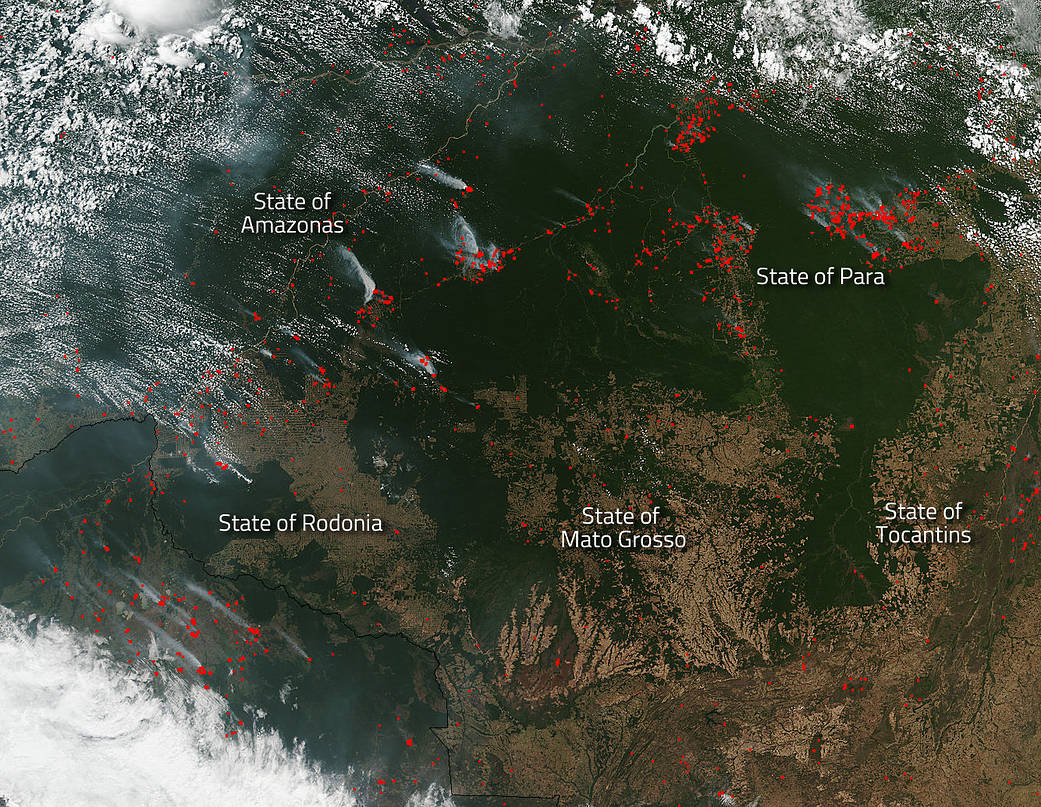The Suomi NPP satellite’s Visible Infrared Imaging Radiometer Suite (VIIRS) instrument captured a look at multiple fires and smoke in several states in Brazil on August 03, 2017.
Global Forest Watch keeps track of the hot spots that are recorded by Terra, Aqua and Suomi NPP satellites. During the week of July 27 – Aug. 03, 2017, the site detected and reported 59, 093 forest fires burning in Brazil. The number of fires is also broken down into the different states with some states recording many more fires than others. During this week (and coinciding with the date of the satellite image) the site detected the following:
State of Para: 16,947
State of Amazonas: 8,707
State of Rondonia: 5,402
State of Mato Grosso: 4,987
State of Tocantins: 4,245
The first four states have the highest number of fires in Brazil. The fifth state listed is actually number 6 on the list of fires with only Marahao having more fires. This area seems to be the epicenter of the ongoing fires in Brazil.
Global Fire Watch uses NASA Fire Information for Resource Management System (FIRMS) near real-time (NRT) active fire data from the MODIS and VIIRS instruments on the Aqua, Terra, and Suomi NPP satellites to map fire locations. The sensors on these satellites detect the heat signatures of fires from the infrared spectral band. When a fire is detected, the system indicates the area where the fire occurred with an “alert.” Because each satellite orbits the earth twice per day, these alerts can be provided in near-real time. Actively burning areas are outlined in red. When they are accompanied by smoke, as in this image, they are indicative of fire.
The Suomi NPP satellite is a joint mission between NASA and NOAA.
NASA image courtesy Jeff Schmaltz, MODIS Rapid Response Team. Caption: NASA/Goddard, Lynn Jenner with information from Global Forest Watch























